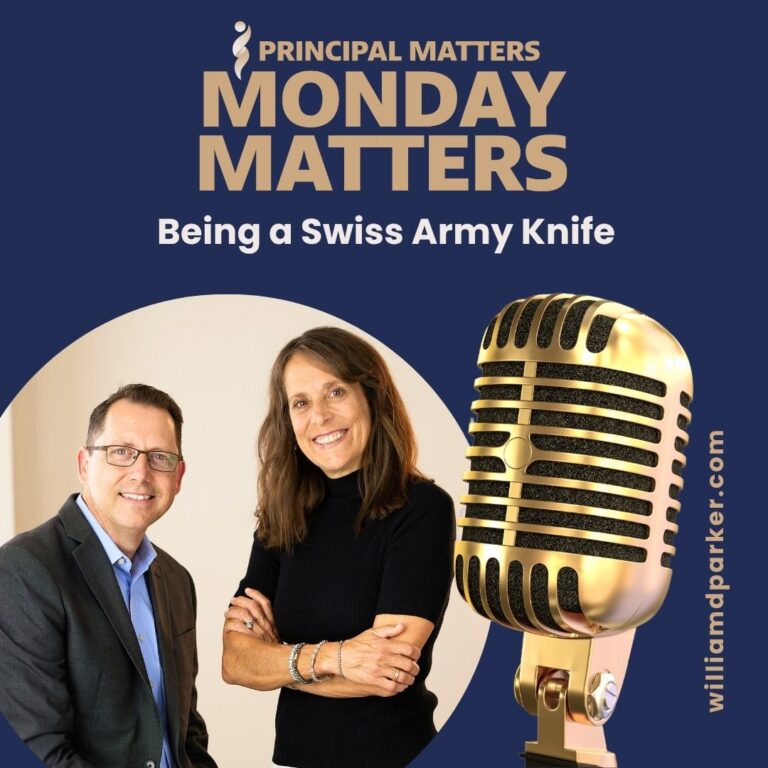If you are like me, you want school leadership to be about inspiring or encouraging others to reach shared goals. So often, motivational leadership also requires managing complicated situations or people.
Over the years, I have begun to learn practical skills in dealing with people who are upset, angry, or just plain mean.
I don’t always do it correctly, but I believe with practice, anyone can learn to maximize the potential of finding solutions in conflicts.
Whether you face challenging people on a daily basis, or only occasionally, here are some tips I have learned from my own experience as well as watching others who consistently manage difficult people:
1. Make sure you are not the difficult person.
Most of us don’t like to admit it, but often our own attitude, demeanor, and level of patience significantly affect the way we interact with someone in a difficult moment.
When someone comes to see me in the midst of a highly emotional situation, whether they are distressed about their own situation or someone else’s, they are often anticipating resistance. So, the first thing I try to convey in those situations is an open, welcome, and listening attitude.
Instead of immediately going on the offensive or defensive, I try to let them know I am glad to see them and want to help.
I also try to gauge my own temperament. In the school setting, it is not uncommon to immediately go from one high stress situation to another. So, I try to remind myself that the person I am encountering has not seen my whole day–just the very moment I am in.
Likewise, I have not seen his or her whole day either. By keeping in mind that I need to not be the difficult one, I am more likely to really listen and often decrease some of the heightened emotions involved in the difficult situation.
2. Seek to understand before being understood.
Stephen Covey teaches this principle in his 7 Habits for Highly Successful People.
Don’t assume the best communication is when you’re the only one speaking. When someone comes to you with a difficulty or problem or even with a confrontation, if your goal is to find a solution, you first have to understand the problem.
One practical tip I learned from my mentors has been to take notes when someone is sharing concerns. First, this helps me keep the thoughts and the details they are sharing in front of me so that I can separate the facts from the emotions.
Second, it demonstrates to the other party that I take their concerns seriously. Many times, when people feel confident that the problem is being taken seriously, a difficult meeting can turn into a bridge-building opportunity.
Sometimes understanding requires some coaching. I worked with a great assistant principal who would say, “I’m having a hard time understanding. Help me see the video in my head of what you are talking about.”
This was a great way to give the person permission to calm down, be specific, and feel understood. Good problem solving happens not only with a good picture of the situation but also when you have set the right tone for the conversation.
3. Be firm but friendly.
Granted, there are times when a difficult person completely misunderstands the facts. And bluntness is not always off the table.
So don’t be afraid to tell the truth with kindness. When you do, you will gain the respect of the listener much more than excuses or non-committal statements.
A good example of this was a fellow administrator I knew who once yelled at a student who was skipping classes. The boy’s mother came to the school very upset that her child was being disciplined and that the administrator had yelled at the student. When the parent confronted her, she simply told the truth.
“Yes, Mrs. Smith, I did yell,” she said. “I found your son in the hallway trying to sneak into the gym after I had just confronted him ten minutes earlier for loitering in the halls and had told him to be punctual with getting to class. When I saw him the second time, I yelled at him like I would my own child for being disrespectful of our time and wasting his own. That’s when I escorted him to the office and called you.”
The mother’s countenance softened, she sighed, and to my friend’s surprise, she said, “Can you help me learn how to deal with him? He never does what I tell him to do at home.”
Obviously, I am not advocating yelling at students, but my friend’s polite frankness turned a potentially volatile situation into a learning moment for everyone involved.
4. Change your posture or use humor when appropriate.
You will be amazed how disarming it can be to an angry person when they are greeted with a smile and a handshake.
Sometimes sitting at your desk is appropriate for a meeting, but at other times, I like to come out from around my desk and sit together at a table or in matching chairs to speak to someone.
Closed fists or crossed arms convey anxiety or frustration, so I consciously maintain an open posture with relaxed hands on my knees or desk, or I take notes while pausing to make good eye contact. All of these mannerisms convey that we are not enemies but allies.
Even when you are explaining or conveying information that is hard for someone else to hear, it is often much easier for them to accept it when your body language conveys you are relaxed, not attacking.
I also find strong words are more effectively delivered in a calm voice. Will you always do this well? No. But try to purposely practice these postures in order to create the best setting for a good conversation.
Also, if appropriate, find something in the situation that you can eventually laugh about. With students, that is not difficult–they provide lots of good content for humor!
5. Agree to disagree.
So, what do you do when you have tried all of the above, but the other person is still upset or disagrees with you? Remember the goal is about what is best for everyone involved.
It is not about winning or losing.
If someone has a reason for still disagreeing or being unsatisfied, give them specific instructions for how to appeal that concern to someone else in the leadership structure.
Even if it’s a matter that goes nowhere else after the immediate conversation, sometimes it just helps to say, “You know. We’re just going to have to agree to disagree. ” You’re not ending the conversation by saying, “I’m right. You’re wrong.” You may not even be changing a decision, but you are demonstrating the desire for mutual respect even in the midst of a disagreement.
Remember in the business of school, you will most likely encounter this person again in the community, at a ball game, or maybe even at church.
You want to be able to look them in the eye and know that you still treated them with the dignity you would want someone to show you in a disagreement.
6. Consider Bringing All Parties to the Table
Sometimes resolving conflicts requires more than just a one-on-one conversation. If the conflict involves multiple parties, bringing them all to the table helps shed light on the situation and makes it easier to cut through misunderstandings and reach solutions.
Learning how to resolve conflicts among parties could be a whole post by itself, so I will save that for another time.
Conclusion:
At the end of the day, none of us likes confrontation or difficult moments. Most people are prone to fight or flight. But there is another option.
By checking your own motives, seeking to understand, remaining firm and friendly, maintaining an open posture, sometimes agreeing to disagree, or bringing all parties to the table, you can go a long way in turning difficult conversations into more positive outcomes.
Recommended Listen:
John Dumas has a great interview with media consultant Mike Blinder. Listen to the first 10 minutes for some great tips on how he has learned to deal with difficult people.
Now It’s Your Turn:
Can you think of a time you were able to deescalate a tense situation or person? What steps did you use? What could you add to the list above? What are some great resources you recommend for someone who wants to learn how to better communicate in difficult situations?
Sign-Up For Free Updates
When you enter your email address here, you will automatically receive my newest posts! Let’s keep learning together!
Principal Matters–The Book!
School leaders are very busy, so each of the twenty-four chapters is designed as a quick-read and followed with take-action questions for follow-up or reflection. If you want practical ideas on understanding your purpose, managing school teams, dealing with challenges, and leading with courage, action, motivation, and teamwork, go HERE to pick up a copy for you or your team.




